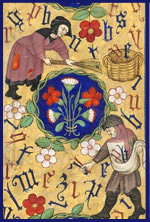Libraries at University of Nebraska-Lincoln
Document Type
Article
Date of this Version
9-8-2018
Abstract
MIT researchers, students, and staff have long valued and put into action MIT’s mission to generate and disseminate knowledge by openly and freely sharing research and educational materials. Indeed, the Institute has been at the forefront of the sharing culture: MIT launched OpenCourseWare (OCW), a free webbased publication of virtually all MIT course content in 2001; in 2002 released DSpace, an open-source platform for managing research materials and publications co-created by MIT Libraries staff; and adopted the first campus-wide faculty open access (OA) policy in the US in 2009.
Convening an open access task force was one of the 10 recommendations presented in the 2016 preliminary report of the Future of Libraries Task Force. In July 2017, Provost Martin Schmidt appointed the MIT Ad Hoc Task Force on Open Access to MIT’s Research (OA task force) to recommend ways that MIT’s OA policies can be revised and updated “to support MIT’s mission to disseminate the fruits of its research and scholarship as widely as possible.” The OA task force is co-chaired by Class of 1922 Professor of Electrical Engineering and Computer Science Hal Abelson and Director of Libraries Chris Bourg, and includes a diverse and multidisciplinary group of faculty, staff, postdocs, and graduate and undergraduate students (see Appendix A).
The term “open access” as used by the task force comes from the 2002 Budapest Open Access Initiative and refers to research literature (typically journal articles) that is immediately, freely available on the public internet: Anyone would be able to “read, download, copy, distribute, print, search, or link to the full texts of these articles, crawl them for indexing, pass them as data to software, or use them for any other lawful purpose, without financial, legal, or technical barriers other than those inseparable from gaining access to the internet itself.”1
That said, open access is applied in different ways; i.e., OA doesn’t always imply that you can reuse research articles for “any lawful purpose.” Articles may be cost-free to read but still subject to publisher policies that limit other uses. Educational materials, data, and code, which MIT researchers routinely create and release publicly, may also be made openly available under different terms.
Open access may have begun simply because the web allowed for easy sharing, but it has evolved into a complex movement with political, social, and economic dimensions. The scholarly journal publishing system is unique in that researchers contribute their articles with no expectation of payment; at the same time, some publishers charge ever-increasing subscription fees, restrict authors’ rights to reuse work, or both. Variations in the type of open access that will help “fix” the system are at the heart of debates among researchers, funders, librarians, and publishers.
This white paper is the first deliverable of the OA task force. Its goal is to give MIT students, staff, and faculty an overview of the open access landscape at MIT, in the United States, and in Europe to help inform discussions at the Institute over the next year. These discussions, which will take place at community forums and in other venues, including the task force idea bank, will help inform the task force as it develops a set of recommendations across a broad spectrum of scholarly outputs, including articles and books, data, educational materials, and code.
Part I of this paper provides an overview of current OA policies and movements in Europe and the United States as a way to give broader context to what open access means in practice internationally. Part II explores MIT researchers’ approaches in terms of making their publications, data, code, and educational materials openly available.
Included in
Intellectual Property Law Commons, Scholarly Communication Commons, Scholarly Publishing Commons


Comments
© 2018 Massachusetts Institute of Technology. Licensed CC-BY.